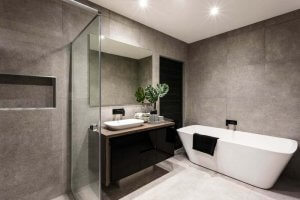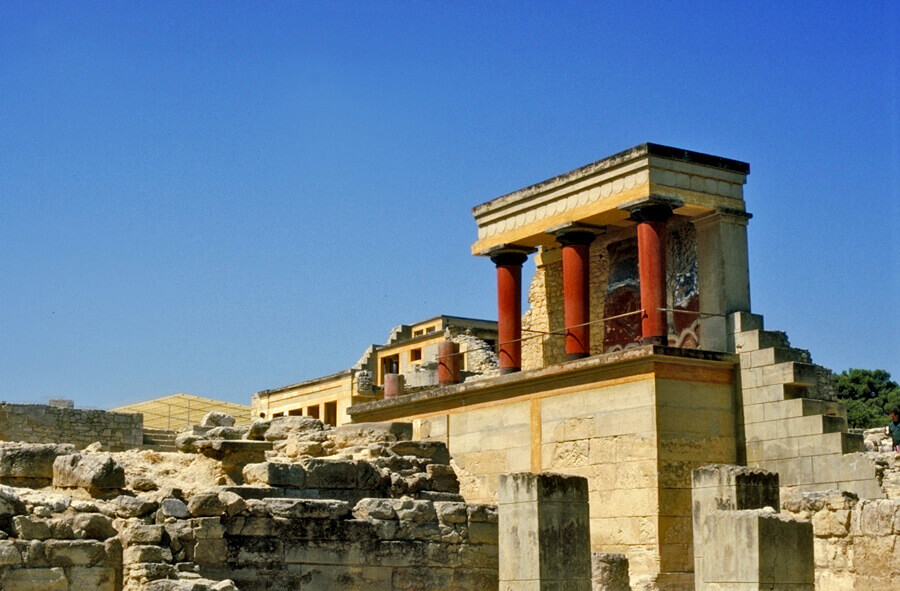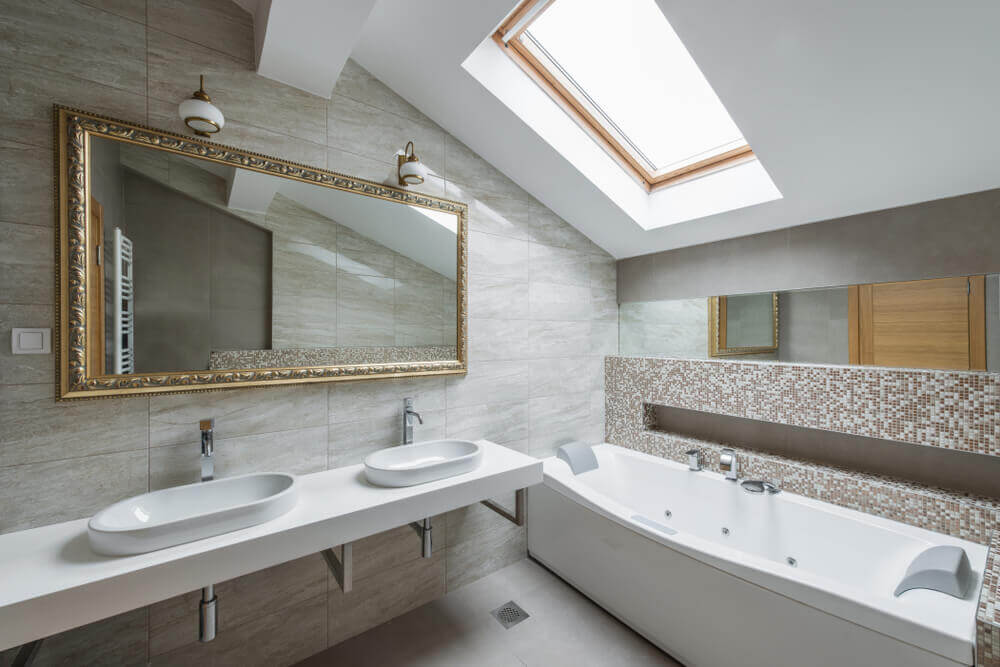The History behind Bathrooms

Bathrooms have evolved throughout history with civilizations, over time their locations and functions have changed to better adapt to new lifestyles and hygiene habits.
But in the beginning, they didn’t necessarily start as a restroom. Bathing rituals are more complicated. In some civilizations, they even had religious purposes.
Bathrooms, a trip to the past
Get ready to go back in time to learn a little history. Our first stop is Ancient Greece and from there, we’ll walk through to the 21st century.
Bathrooms in ancient history. Greece and Rome.

The first known spaces in Western civilization with hygienic purposes are now ruins that once were the queen of Knossos’ bathroom. Her husband, King Minos, ordered the construction of her bathroom in the Knossos Palace in Crete.
In time, all the Hellenic cities copied the bathroom. But it was the Romans who gave bathrooms and bathhouses a social and architectonic dimension.
Toilets also existed at the time of the Romans. Only a select few, however, had the privilege of having access to running water.
Bathrooms in Islamic culture
In Islamic culture, bathrooms serve both social and religious purposes. Bathrooms were places to socialize and bathe. Meanwhile, in a religious context, they were a place to purify the body and soul.
The Middle Ages
In Medieval times the concept of bathrooms changed radically. After big political, philosophical and religious reforms, people began to consider hygiene as a sinful practice.
Bathrooms in the 16th and 17th centuries
In the 16th and 17th centuries, the naked body was a taboo, which led to many problems in hygienic practices. Many public bathrooms disappeared and the smell grew considerably.
It was during this time a lack of personal hygiene hit rock bottom in Europe. Consequently, there was a rise in infectious diseases.
Near the end of the 16th century, Sir John Harrington thought up the idea of a seat with an underground drainage system and water tank. In his design, opening the tank would allow water to fall into the seat, carrying away its contents. And it was the precursor to the modern toilet we know today.
The 18th century

But Alexander Cummings and Joseph Bramah designed the toilet that would bring the world to modernity. The 18th century promoted the relationship between hygiene and health.
Officials spread awareness of general preventative hygiene to fight against epidemics and contagious diseases. These practices included washing hands regularly and bathing daily with soap and water.
The 19th century
Bathrooms and restrooms made their way into homes at the end of the 19th century.
Thanks to the advances in city planning, city architects created a system similar to our modern-day sewers. In turn, bathrooms progressed into modernity as well.
The new systems included complex installations such as plumbing, faucets, drains, and boilers. These advances brought a new sense of comfort and pleasure to bathrooms.
The 20th century
Bathrooms finally became what we know them to be today in the 20th century. The architectural changes from the first to the second half of the century are a good indication of the progression: in the second half, bathroom designs were triple the size of what they originally were at the beginning of the century.
They continued gaining a permanent space as well as priority in homes. Before the 20th century, urban residential buildings usually had a single bathroom for all the apartments on the first floor.
Bathrooms of today

Today, bathrooms are an essential part of a home. Also, bathroom design and decor holds greater weight than ever as people value comfort and well-being.
We spend more time in our bathrooms bathing, applying facial and body treatments, all of which are important activities to stay healthy physically and mentally.
Plumbing installations and furniture come in a wide variety: closets, mirrors, light fixtures, plants, shower doors, scales, and gym equipment sit alongside bathtubs, showers, sinks…
In today’s world showering daily is a common practice but other tools promote personal hygiene and grooming. Not to mention, relaxation methods are abundant as well.
In any case, the perfect bathroom must suit the personal needs of its user. It must include a good layout of installations, accessories, and materials that make the most of the space while helping the user feel comfortable.
Wasn’t that interesting? We hope you enjoyed today’s post.
Bathrooms have evolved throughout history with civilizations, over time their locations and functions have changed to better adapt to new lifestyles and hygiene habits.
But in the beginning, they didn’t necessarily start as a restroom. Bathing rituals are more complicated. In some civilizations, they even had religious purposes.
Bathrooms, a trip to the past
Get ready to go back in time to learn a little history. Our first stop is Ancient Greece and from there, we’ll walk through to the 21st century.
Bathrooms in ancient history. Greece and Rome.

The first known spaces in Western civilization with hygienic purposes are now ruins that once were the queen of Knossos’ bathroom. Her husband, King Minos, ordered the construction of her bathroom in the Knossos Palace in Crete.
In time, all the Hellenic cities copied the bathroom. But it was the Romans who gave bathrooms and bathhouses a social and architectonic dimension.
Toilets also existed at the time of the Romans. Only a select few, however, had the privilege of having access to running water.
Bathrooms in Islamic culture
In Islamic culture, bathrooms serve both social and religious purposes. Bathrooms were places to socialize and bathe. Meanwhile, in a religious context, they were a place to purify the body and soul.
The Middle Ages
In Medieval times the concept of bathrooms changed radically. After big political, philosophical and religious reforms, people began to consider hygiene as a sinful practice.
Bathrooms in the 16th and 17th centuries
In the 16th and 17th centuries, the naked body was a taboo, which led to many problems in hygienic practices. Many public bathrooms disappeared and the smell grew considerably.
It was during this time a lack of personal hygiene hit rock bottom in Europe. Consequently, there was a rise in infectious diseases.
Near the end of the 16th century, Sir John Harrington thought up the idea of a seat with an underground drainage system and water tank. In his design, opening the tank would allow water to fall into the seat, carrying away its contents. And it was the precursor to the modern toilet we know today.
The 18th century

But Alexander Cummings and Joseph Bramah designed the toilet that would bring the world to modernity. The 18th century promoted the relationship between hygiene and health.
Officials spread awareness of general preventative hygiene to fight against epidemics and contagious diseases. These practices included washing hands regularly and bathing daily with soap and water.
The 19th century
Bathrooms and restrooms made their way into homes at the end of the 19th century.
Thanks to the advances in city planning, city architects created a system similar to our modern-day sewers. In turn, bathrooms progressed into modernity as well.
The new systems included complex installations such as plumbing, faucets, drains, and boilers. These advances brought a new sense of comfort and pleasure to bathrooms.
The 20th century
Bathrooms finally became what we know them to be today in the 20th century. The architectural changes from the first to the second half of the century are a good indication of the progression: in the second half, bathroom designs were triple the size of what they originally were at the beginning of the century.
They continued gaining a permanent space as well as priority in homes. Before the 20th century, urban residential buildings usually had a single bathroom for all the apartments on the first floor.
Bathrooms of today

Today, bathrooms are an essential part of a home. Also, bathroom design and decor holds greater weight than ever as people value comfort and well-being.
We spend more time in our bathrooms bathing, applying facial and body treatments, all of which are important activities to stay healthy physically and mentally.
Plumbing installations and furniture come in a wide variety: closets, mirrors, light fixtures, plants, shower doors, scales, and gym equipment sit alongside bathtubs, showers, sinks…
In today’s world showering daily is a common practice but other tools promote personal hygiene and grooming. Not to mention, relaxation methods are abundant as well.
In any case, the perfect bathroom must suit the personal needs of its user. It must include a good layout of installations, accessories, and materials that make the most of the space while helping the user feel comfortable.
Wasn’t that interesting? We hope you enjoyed today’s post.







